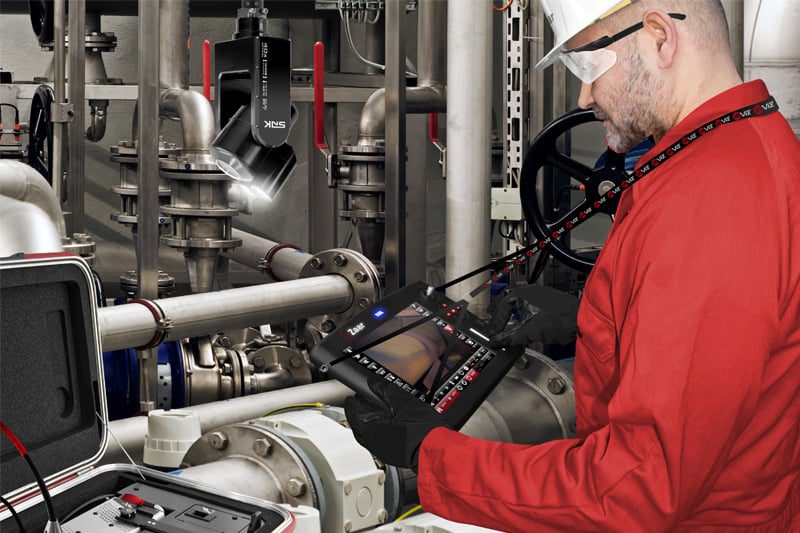Have You Selected The Right Remote Visual Inspection or Non-Destructive Testing Equipment For Your Requirements?

Choosing the equipment for remote visual inspection (RVI) or non-destructive testing (NDT) is more complicated than many people believe and it’s definitely NOT a case of one size fits all.
In fact, using the wrong equipment for a particular application can actually result in costly damage to the device, unsatisfactory inspections and wasted time and money. But with so many different devices on the market and ever-changing technologies and innovations coming to the fore, how do you know which piece of RVI or NDT equipment is best-suited to your particular application?
First and foremost, it’s important to partner with an experienced and reputable supplier otherwise you run the risk of making an inappropriate choice. Knowledge is power and if you understand the basic specifications of RVI equipment such as borescopes, fibrescopes, videoscopes, pan-tilt-zoom (PTZ) cameras, push cameras and robotic crawlers, you’ll be in a far stronger position to make an informed choice.
For example, all borescopes have a lens at their tip which forms an image of the object and which is then transmitted down the tube where it is magnified for viewing. But borescopes come in several different forms (rigid, flexible and semi-rigid), they come in varying lengths, they produce images of different resolutions and they offer various directions and fields of view too.
Would you choose a 00, 900, 700 or 1100 borescope? What’s the difference?
Ninety degree instruments are commonly used for inspecting tubing, rifling, weld joints, cross, holes cylinder walls and turbine blades whilst 700 and 1100 borescopes are often used for viewing valves in engines. When it comes to the price, a quality flexible borescope costs much more than a rigid one – and while there are definite manoeuvrability benefits, there is often a compromise in terms of image resolution.
Clearly, when it comes to choosing RVI and NDT equipment, it’s not always a simple decision or one which can be justified solely in terms of what the equipment costs.
Selecting the most appropriate equipment for the job requires a bit of time and effort, but the benefits will be significant. By way of illustration, let’s look at some of the factors that would need to be taken into consideration when choosing RVI equipment (and although this relates specifically to borescopes and other RVI devices), the same principles apply when choosing NDT equipment.
Factors that should be considered:
- The diameter of the access point and of the item under test (ie will the borescope, fibrescope or videoscope fit?)
- The length of the area that needs to be tested (if the instrument is too long, it can become trapped or damaged – too short and the inspection will be inadequate)
- The geometry of the area under test. Are there complex twists and turns (eg in pipelines) that need to be factored in so that the correct sized instrument is selected?
- Tip articulation. Some borescopes offer the ability to remotely move the tip around – but these can be pricey and trickier to operate.
- The direction of view and the distance from the probe to the area under test
- The field of view (ie how large an area can be seen at a given distance during testing)
- Environmental conditions, ie does the device have to be waterproof?
- How important is digital integration, connectivity, real-time data sharing etc?
- Portability requirements and preferred power sources (AC or DC battery) also need to be considered
Understanding your own specific needs and the basic concepts of each RVI or NDT instrument will inform your decision when selecting equipment – and you can make sure that your choices are appropriate by partnering with an expert in the field of RVI and NDT.
Choosing a company like Nexxis, one of the leading suppliers of technical equipment in the fields of NDT and RVI in Perth, will not only save you time and money – it will also enable better inspection results. They have a wealth of experience in the field and their team of experts keep up to date with all the latest innovations and technological developments to make sure that the equipment you choose delivers value-for-money and does the best job possible.
